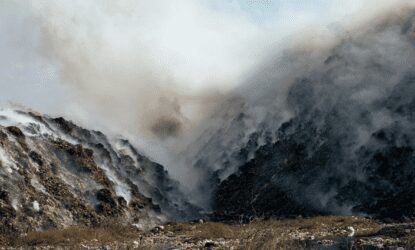 Understanding Scope 1 and 2 greenhouse gas emissions
Understanding Scope 1 and 2 greenhouse gas emissions
“Every credible step in sustainability is recognised — EcoVadis rewards progress, not just perfection.”
Building on the success of our previous article “EcoVadis 2025 unpacked: Your top questions answered”, our sustainability experts wrote this new guide. It goes deeper into the EcoVadis assessment process, updates for 2025, and your latest frequently asked questions. If you missed the baseline explanations, start with our earlier piece for foundational knowledge.
EcoVadis continues to develop in response to rising expectations around transparency and measurable sustainability impact. This follow-up supplements our original article—available here — with fresh insights from the latest assessment cycle, updated scoring methodology, and additional Q&A. You’ll find practical advice, clear visuals, and actionable tips, ensuring your sustainability journey keeps pace with the evolving EcoVadis certification requirements.
Overview: The EcoVadis assessment process
- Register: Create a company profile to customise your questionnaire by sector, size, and geography.
- Complete: Answer a secure, multilingual questionnaire, uploading all supporting documents.
- Analyse: EcoVadis independently audits and analyses your documents, translating responses into a Scorecard.
- Score: Access your online scorecard, including a Corrective Action Plan.
- Share: Share results with customers, peers, and partners.
Key Timelines:
- Registration to Scorecard: ~2-6 months
- Scorecard validity: 1 year
Four sustainability pillars & assessment indicators
Underpinning each pillar are indicators like Policies, Endorsements, Measures, Certifications, Coverage, Reporting, and the 360 Watch for external issues.
Watch our video series, breaking down EcoVadis, from assessment processes to how to improve your score and achieve EcoVadis Gold or even Platinum.

Frequently asked documentation questions
Q: Why are documents rejected in EcoVadis Assessments?
A frequent source of frustration in EcoVadis ratings is receiving only brief feedback when documents are rejected. It’s essential to understand that EcoVadis reviewers provide specific reasons for each rejection, all visible within your ‘Score Details’ section on the platform, but the explanations can sometimes seem generic.
Typical reasons for rejection include:
- Insufficient supporting evidence: The document did not provide enough detail or proof to substantiate your answer. For example, a policy might be described as a list of actions taken instead of a formal, dated statement of intent, objectives, and targets. Measures and reports are often rejected if they lack enough specific information to confirm that the required practices are genuinely implemented.
- Outdated documentation: Even if content appears relevant, documents must meet current validity requirements. Anything too old—such as expired certifications or policies not reviewed in recent years — will be flagged.
- Out of scope: On group-level assessments, documents reference data or practices at the parent company level without breaking down relevance for each subsidiary or the assessment’s specific scope. EcoVadis needs evidence clearly tied to the entity under review.
- Mismatch with the question: Rejection can result if submitted evidence does not directly align with the specific question or contains redundant information.
Always refer to the official EcoVadis Document Guide for validity thresholds and formatting guidance. When in doubt, double-check that every document:
- Is clearly labelled with your company name/logo,
- Contains explicit dates,
- Is authentic and legible,
- Directly addresses the assessment question.
By ensuring these elements, you can reduce the risk of document rejection and streamline your assessment process.
Q: What kind of document do you accept as proof that a training has been conducted? The signature of the participants seems not to be enough as our documents were rejected.
Training content must be included alongside participation lists to prove that the content was relevant to the question.
Q: Ensuring correctly uploaded documents when having multiple subsidiaries with different logos—what counts?
The group logo/company name should be included on any group-level documents, however if the document belongs to a subsidiary and it’s being submitted to a group assessment, the subsidiary logo/company name would be fine.
Q: When you have documentation in Excel, do you just insert logo and date to have it approved? We had many documents rejected last year due to no date.
Yes – all Excel documents need a date and logo or company name inserted.
EcoVadis methodology
What does “coverage” mean in EcoVadis and how are partial KPIs credited?
Coverage is a critical factor in EcoVadis assessments, especially for large and extra-large companies, and is often a source of specific user questions such as: “Is a metric with less than 80% coverage credited, or does EcoVadis only recognise KPIs above 80%?”
The answer is that EcoVadis recognises and credits partial coverage—even when it’s below the 80% mark — across both certifications and KPIs. Coverage measures how far a sustainable action, program, or certification (like ISO 14001) has been implemented across your operational sites and workforce. You can demonstrate this in two ways:
Certification-based coverage:
For example, if your company has ISO 14001 certification at 10 out of 15 sites (67% coverage), EcoVadis will award points according to set brackets. Even partial rollout is recognised, so you gain credit for progress, not just total completion.
KPI-based coverage:
Actions quantified as a percentage of workforce or activities—such as “78% of employees trained on environmental topics”—are equally valid. These KPIs also earn credit on a sliding scale, based on if they are validated externally through an assurance process or not. Note that externally verified metrics gain higher points according to EcoVadis.
EcoVadis’ scoring system is designed to reward incremental achievement. Here’s how it works:
Key takeaways
- Coverage below 80% still earns positive recognition and contributes to your overall score.
- The more comprehensive your coverage, the higher your scoring potential, but partial efforts do not go unnoticed.
- If you submit multiple high-value coverage KPIs that sit between 51-100%, a 25-point bonus is granted. Therefore, a score of 100 out of 100 is possible based on KPIs alone rather than certifications.
- To maximise your EcoVadis result, provide robust, up-to-date evidence of deployment—whether that’s through certifications at a growing number of sites or measurable KPIs among employees.
Frequently asked methodology questions
Q: What types of KPIs should be used for Sustainable Procurement coverage?
For procurement, sample KPIs include the percentage of suppliers who have signed your Code of Conduct, been audited, or whose buyers have received training on sustainability—again, these percentages count directly toward your coverage and scoring.
If you’re shaping your supplier evaluation or risk assessment, focus on suppliers representing significant spend and consider KPIs that reflect both the breadth and impact of your sustainability actions. This approach not only fulfils EcoVadis requirements, but also positions your organisation for higher scores and greater transparency in your sustainability reporting.
Q: Is the “25 points bonus for coverage” for large companies too?
- Yes, coverage scoring and corresponding bonuses are available for large companies, but thresholds and methods may differ. Review your coverage scoring criteria (site-based and KPI-based) to fully leverage this scoring aspect. If you are an extra-large company, ensure that you review the additional requirements for scoring stipulated by EcoVadis.
Q: When to use site/entity-based certification coverage vs. KPI-based coverage?
- Certifications (e.g., ISO 14001): Use if many sites/entities are certified.
- KPI (e.g., % training): Use if you have strong internal programs but not wide certification.
- Best Practice: Use whichever provides the higher coverage score and more robust, externally verified evidence.
Q: Are there any planned changes to the methodology and the transparency of the methodology?
Methodology updates are performed periodically and documented via the EcoVadis website, to reflect evolving sustainability standards, regulations and expectations.
Q: What can we use as KPIs for sustainable procurement?
EcoVadis provides sample KPIs for all pillars – for procurement this includes % of suppliers who have signed the CoC; % of suppliers who have been audited; % of buyers who have received training on sustainability, and more. We recommend reviewing these for relevance. Note: % KPIs also count for Coverage.
Q: How can a company best shape its supplier evaluation and risk assessment to maximise its EcoVadis score?
This can look at targeted suppliers (e.g. representing top 50% by spend) and should ideally consider risks relating to environmental, social and ethics components, generating a risk score per supplier. Information to determine these risk scores could be based on questions administered to suppliers that assess these components, or via publicly available sources.
Frequently asked scoring questions
Q: How do we navigate the scorecard debrief with EcoVadis?
The Scorecard Debrief is offered to those with Select or Corporate subscriptions (or other subscriptions, however for a fee), involving a call with an EcoVadis analyst. It typically involves an in-depth look at your scorecard. EcoVadis has a preparation guide in place for the call, which we encourage you to look at.
Q: How do we mobilise quickly to get a rescore?
Once it is published, your scorecard is valid for one year. However, you do not need to wait for it to expire, but you can always start a new assessment earlier. Further, if you believe there has been a mistake in the scoring of your assessment, you can inquire about it with EcoVadis. This link can be used to submit an inquiry.
Answering your specific questions
Q: How useful is the “network” function for premium users (e.g., emissions, HR data from suppliers)?
- The “network” enables Premium, Select and Corporate users to request sustainability data from suppliers, including emissions and human rights metrics. You can see suppliers’ scorecards and request targeted disclosures, greatly improving supply chain transparency. However, suppliers must both agree to share their scorecard and be willing/able to provide the requested information.
Q: Why was my valid 2013 document rejected?
- Document currency matters: Even if the policy is “technically valid,” EcoVadis has a validity period of eight years for both policies and actions, and two years for KPI reporting. For this reason, if a policy is more than 8 years old it will be rejected. Additionally, it is best practice to provide current (typically less than three years old) documentation to demonstrate ongoing relevance. Renew or update your documentation regularly; refer to the EcoVadis Document Guide for the most recent requirements.
Tip: Add review dates or update certifications, even if the content hasn’t changed, to show ongoing compliance.
Q: Can I ask for an extension if I can’t complete a revised questionnaire?
- Extensions can be requested via the EcoVadis platform and support channels. An eight week extension can be requested directly in the platform, for longer extensions contact EcoVadis directly through their support channels, providing appropriate justification.
Q: Why aren’t multiple policies covering the same topic (e.g., information security) accepted together?
- EcoVadis generally does not accept merged documents, except in cases of combining certifications from multiple sites. If your company has multiple policies that exist in separate documents, ensure that you do not merge them as EcoVadis will reject this. It would be best practice to upload each policy separately as evidence for the question, or look to organically incorporate multiple policies into one document (for example, an overall policy handbook that includes all internal policies).
Q: Does accepting a connection share your scorecard automatically? Can you control which data is shared?
- Accepting a connection automatically shares your scorecard. Your connection will not be automatically able to see your documents, but will have full view of your scorecard including strengths and improvement areas. .
Q: How can you internally verify KPIs without an Internal Audit team?
- Use management sign-off, HR/training system exports, or third-party verification for KPIs. Document verification methods clearly and ensure processes can be traced and reviewed during assessment. However, note that internal verification, whilst an important part of the reporting process to ensure validity, will not grant additional points in the EcoVadis methodology. Only external verification of KPIs will grant additional points. In fact, to reach 100/100 for the reporting indicators across the four pillars, evidence of third-party verification of KPIs must be in place.
Q: Do you need to submit documents that demonstrate operational sites?
- Not strictly, EcoVadis will undertake this assessment themselves. However, it can help to provide this directly to them in the form of a document, or in the form of an explanation in the GEN800 question. If any sites are excluded from the scope of your assessment, this needs to be clearly evidenced. If there is no valid reason for the site to be excluded, EcoVadis will likely still include it in the scoring process. For example, a valid reason to exclude a site or an entity might be that it was recently acquired and integrated into the group, therefore reporting and measures are not yet in place. It’s important to note this to EcoVadis, and an extra safe approach would be to submit an Inquiry prior to the assessment to explain this.
Q: Should you keep older versions of sustainability reports as evidence?
- Yes, keep all valid documents that support a question, as this helps show ongoing improvements. Only “detach” documents from questions if the document is no longer valid or was previously rejected.
2025 updates
- Theme scores are now unrounded (e.g., 68/100).
- Theme weighting reflects industry risk.
- Continuous improvement is crucial to maintain competitiveness as medals are rewarded based on percentile (e.g. top 5% of all companies assessed receive gold)
- Stricter documentation requirements: evidence must be robust, current, and relevant.
- Maximum score now often requires public KPIs — sustainability reports are critical.
Download our 2025 EcoVadis guide by our EcoVadis consultants for all the details regarding the updates in the methodology, processes and more!
Practical tips for a stronger asessment
- Ensure evidence is clearly documented, authentic and directly answers the question.
- Leverage the network for supplier data — but communicate upfront what you’ll request and why.
- Regularly review EcoVadis methodology updates.
- Ask for extensions early if needed.
Who we are: Guiding sustainability with purpose
As Nexio Projects, we’re an international sustainability consultancy based in Rotterdam, helping organisations move from compliance to purpose by providing ESG advisory. With a team of 50+ experts, we support clients across industries in tackling ESG challenges from decarbonisation strategies to reporting frameworks. Recognised by Verdantix as a top 10 global boutique ESG consultancy and proudly an EcoVadis strategic partner since 2018, we’ve partnered with 400+ organisations worldwide to drive meaningful, lasting impact.
Looking to fast-track your EcoVadis success? Partner with Nexio Projects to reach Gold or Platinum with expert guidance and confidence.












